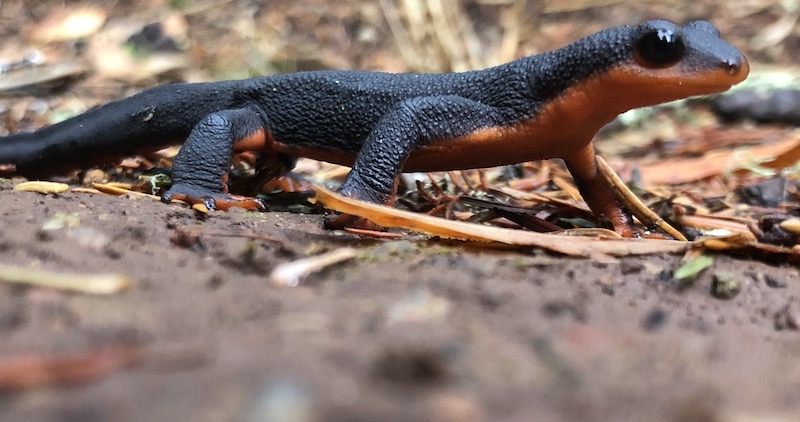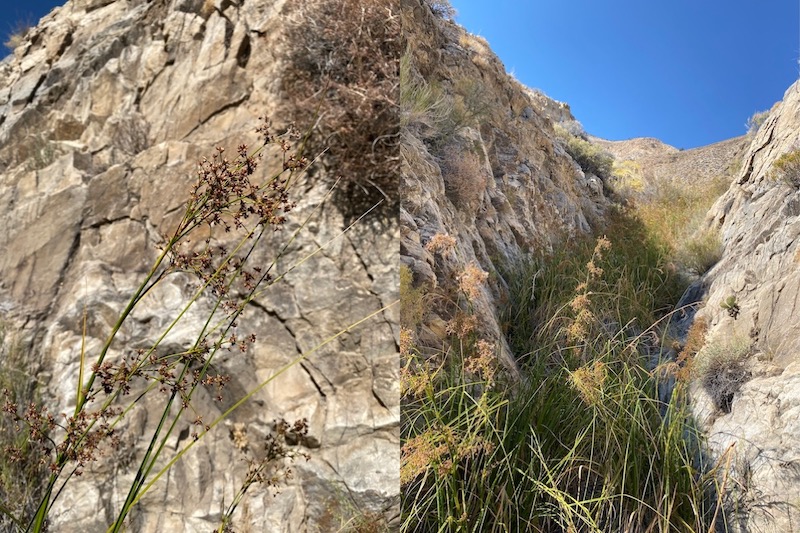
Taricha rivularis – red-bellied newt
Submitted by Sheila McCarthy
Sheila was in eastern Sonoma county when she came across this critter crossing a trail. Red-bellied newts are a California Species of Special Concern and are endemic to California. You can find them in redwood and coastal forests from southern Humboldt county to Lake and Sonoma counties. There has also been an isolated population confirmed in Santa Clara county. They are mainly terrestrial but will breed in streams. When rain starts in the fall, adults will start to move around, find food, and eventually head to streams to reproduce. Red-bellied newts have poisonous secretions that come out of their skin to protect them from predation. If they are eaten in large quantities, they can kill most animals and even humans! However, their main predator, the common gartersnake, has a high resistance to tetrodotoxin and can consume them without harm. This newt species has an impressive longevity too – estimated between 20 and 30 years! Their diet consists of many types of invertebrates and they are usually active at night and late afternoon. Agriculture and urban development pose a threat because of the alteration and degradation of streams these processes require. The development of natural areas can also bring more vehicle traffic which poses a serious threat to this small species, especially during migrations to breeding areas. Currently, the CNDDB has 136 red-bellied newt occurrences throughout its range. Many thanks to Sheila for snapping a great shot of this tiny but mighty species!

Cladium californicum – California sawgrass
Submitted by Joy England
This fascinating grass was discovered by Joy England and Duncan Bell in Inyo County. Joy and Duncan went out looking for this grass as part of California Botanic Garden’s effort, working with the U.S. Fish and Wildlife Service, to conduct status assessments of native species considered at risk of decline. For any questions on the status assessment effort, please contact the principal investigator: Naomi Fraga, Director of Conservation Programs, California Botanic Garden at nfraga@calbg.org. Cladium californicum was first listed in the CNPS Inventory of Rare and Endangered Plants in 2006 and is currently on California Rare Plant Rank 2B.2 (plants rare, threatened, or endangered in California, but more common elsewhere; moderately threatened in California). In California it is found growing in meadows, seeps and alkaline or freshwater marshes and swamps throughout the central coast and southern California. Outside of California it can be found across Nevada, Arizona, Utah, and as far east as Texas. Blooms of C. californicum can be found throughout the summer from June to September. Thank you Joy for your work checking on the status of this amazing grass and thanks to both Naomi and Joy for their continued work protecting California’s native plants!
Do you have some great photos of rare plants or wildlife detections? Submit them along with your findings through our Online Field Survey Form and see if your photos get showcased!